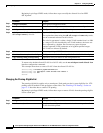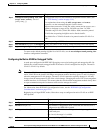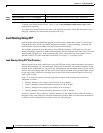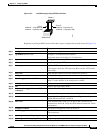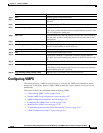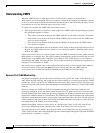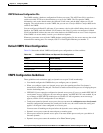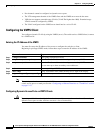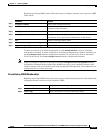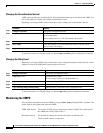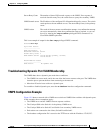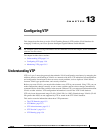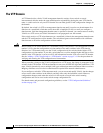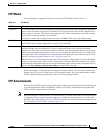
12-28
Cisco Systems Intelligent Gigabit Ethernet Switch Modules for the IBM BladeCenter, Software Configuration Guide
24R9746
Chapter 12 Configuring VLANs
Configuring VMPS
• Port channels cannot be configured as dynamic access ports.
• The VTP management domain of the VMPS client and the VMPS server must be the same.
• VQP does not support extended-range VLANs (VLAN IDs higher than 1006). Extended-range
VLANs cannot be configured by VMPS.
• The VLAN configured on the VMPS server should not be a voice VLAN.
Configuring the VMPS Client
You configure dynamic VLANs by using the VMPS (server). The switch can be a VMPS client; it cannot
be a VMPS server.
Entering the IP Address of the VMPS
You must first enter the IP address of the server to configure the switch as a client.
Beginning in privileged EXEC mode, follow these steps to enter the IP address of the VMPS:
Note The switch port that is connected to the VMPS server cannot be a dynamic access port. It can be either
a static access port or a trunk port. See the “Configuring an Ethernet Interface as a Trunk Port” section
on page 12-17.
Configuring Dynamic Access Ports on VMPS Clients
Caution Dynamic port VLAN membership is for end stations or hubs connected to end stations. Connecting
dynamic access ports to other switches can cause a loss of connectivity.
Command Purpose
Step 1
configure terminal Enter global configuration mode.
Step 2
vmps server ipaddress primary Enter the IP address of the switch acting as the primary VMPS server.
Step 3
vmps server ipaddress Enter the IP address of the switch acting as a secondary VMPS server.
You can enter up to three secondary server addresses.
Step 4
end Return to privileged EXEC mode.
Step 5
show vmps Verify your entries in the VMPS Domain Server field of the display.
Step 6
copy running-config startup-config (Optional) Save your entries in the configuration file.



